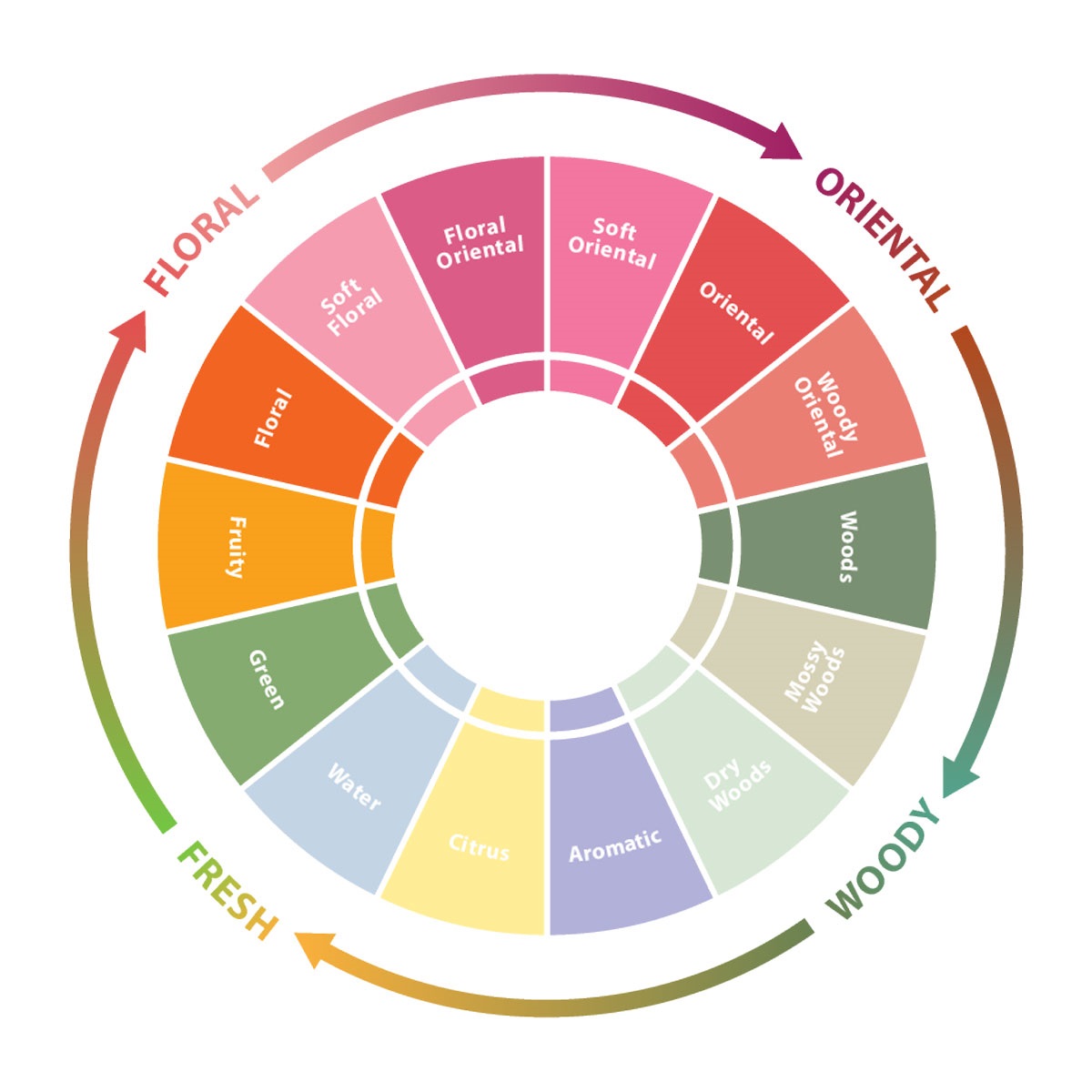
Have you ever faced difficulties in choosing or differentiating fragrance scents? Whether you are a fragrance fanatic or new to fragrance, finding fragrance you love can be a challenging experience. Since there are so many different types of fragrance scents out there, how do we actually differentiate them? In this article, we are going to explore on the classification of fragrances and different scent categories.
Understanding Fragrance Wheel

We believe that anyone in searching or trying to differentiate fragrance scents will came across the fragrance wheel, so what is it? A fragrance wheel, also known as aroma wheel, fragrance circle, perfume wheel or smell wheel, is a circular diagram developed by a fragrance expert, Michael Edwards to help perfumers finding the most suitable fragrance scents. This diagram has been widely used by perfumers over the world in differentiating fragrances. In this diagram, every scent families, subfamilies and scent notes were included and categorised.

So, What are Fragrance Families?
In general, fragrances are classified into four main scent families in which each of them feature one important scent:
- Floral
- Oriental
- Woody
- Fresh
Within each of these main families, they are further divided in subfamilies which define the fragrance scent in a much closer details. Commonly, we will be more attracted to only scents from one or two families more than others.
What are the Fragrance Subfamilies?
There are a total of 14 fragrance subfamilies, together with their main notes, as listed below:
- Floral: Fresh-cut and flowers
- Soft Floral: Aldehydes and powdery notes
- Floral Oriental: Orange blossom and sweet spices
- Soft Oriental: Incense and amber
- Oriental: Oriental and resins
- Woody Oriental: Sandalwood and patchouli
- Woody: Aromatic woods and vetiver
- Mossy Woody: Oakmoss and amber
- Dry Woody: Dry woods and leather
- Aromatic: Lavender and aromatic herbs
- Citrus: Bergamot and other citrus oils
- Water: Marine and aquatic notes
- Green: Galbanum and green notes
- Fruity: Berries and non-citrus fruits
Classification in Fragrance Families & Subfamilies
After having a glimpse on the fragrance families and subfamilies, we are going take a look at a much closer level on every families, subfamilies and the connection among them. This is incredibly important in helping us in finding our own preferred fragrance scents.
1. Floral


Fruity: Sweet, edible and tropical fruity notes (eg: peach and apple)
Floral: Smells like fresh-cut flowers (eg: rose and lily)
Soft floral: Soft, powdery and sweet
Floral oriental: Floral with gentle spice notes
2. Oriental


Soft oriental: Soft and floral notes mix with spices
Oriental: Sweet and warm notes (eg: cinnamon and vanilla)
Woody oriental: Earthy notes mixed with spicy and sweet notes
3. Woody


Woody: Core woody aromatic scents (eg: sandalwood and cedarwood)
Mossy wood: Smooth and sweet scents combine with earthy scents (eg: amber)
Dry wood: Smoky and smouldering combined with leather aromas
4. Fresh


Aromatic: Fresh and clean scents mixed with aromatic notes
Citrus: Fresh, bright, tangy and zesty notes (eg: mandarins or bergamot)
Water: Aquatic mixed with oceanic notes
Green: Uplifting scents like crushed green leaves and freshly mowed lawns
Conclusion
In short, fragrances are categorised into 4 main families and 14 subfamilies. Each families feature individual prominent scents, which are then further divided into subfamilies that define the scents in a much closer details. Whether you are an expert or new to fragrances, these classification will help you significantly in searching for the fragrance you love. Normally, you will be attracted to maximum one or two scent family more than the others, thus you should explore the subfamilies under the main family to look for the fragrance perfect for you.
